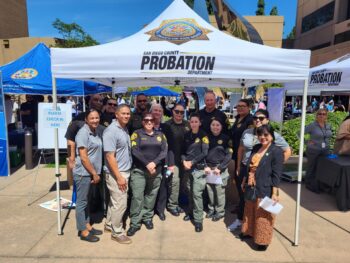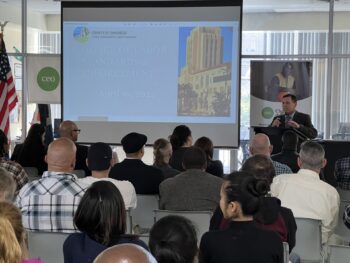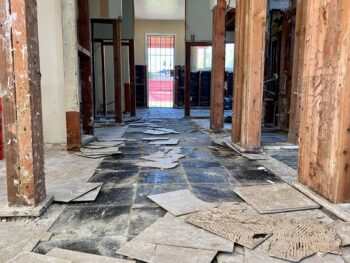Sometimes, a school lesson turns out to be a lifesaver.
That was the case in Thailand’s devastating 2004 Tsunami. About 100 tourists were enjoying themselves on one Phuket beach when 10-year-old Tilly Smith, vacationing with her family from England, realized the receding water and frothing sea were the very signs of a tsunami she’d learned in school. Her warning prompted hotel staff to evacuate the beach—just in time.
This Tsunami Awareness Week, March 26-30, the San Diego County Office of Emergency Services (OES) will help ensure local children are just as prepared.
Classrooms across the region will tune into cable TV or use the Internet to view OES’s charming and Emmy award-winning animated short, Tsunamis: Know What to Do. You can watch it below.
“Kids really like this lesson, and Mr. King the crab is a great teacher,” said County OES Director Holly Crawford, referring to the video’s crustacean characters. “In San Diego, our young people live on the coast or go to beach, so knowing how to recognize and respond to a tsunami could prove critical one day.”
While the region’s schoolchildren learn about tsunamis this week, the recent one-year anniversary of Japan’s terrible tsunami reminds us all of the ocean’s destructive potential. OES hopes adults, too, will take some time during Tsunami Awareness Week to learn about what to do if a tsunami ever hits our coast.
A tsunami wave in San Diego County could either be caused by a strong, local earthquake or a quake hundreds of miles away. The shaking would tell us a local tsunami might follow; NOAA’s West Coast and Alaska Tsunami Warning Center would provide alerts on a tsunami that originated further away.
Beaches, bays, tidal flats and coastal communities are in the greatest danger from tsunami waves, which could arrive in series for a number of hours and reach up to 20 feet high.
Tsunami Tips:
- Determine the elevation of your home and how far it is from the coast. Know whether you live in a tsunami hazard zone.
- If you live within a couple of miles of the coast, identify a location to go to if a tsunami strikes. Ideally, it should be at least two miles inland or 100 feet above sea level.
- Learn the signs of an approaching tsunami. If the tide rises or recedes rapidly, move immediately inland to higher ground.
- If you are near the coast and an earthquake occurs, Drop, Cover and Hold on until the shaking stops; then immediately move to higher ground, at least 100 feet above sea level or inland two miles, walking quickly, rather than driving, to avoid debris and hazards.
- Take tsunami warnings seriously and use common sense, moving away from low-lying areas and staying away until emergency officials issue an all-clear.
Complete tsunami and emergency preparedness information is available at ReadySanDiego.org.




